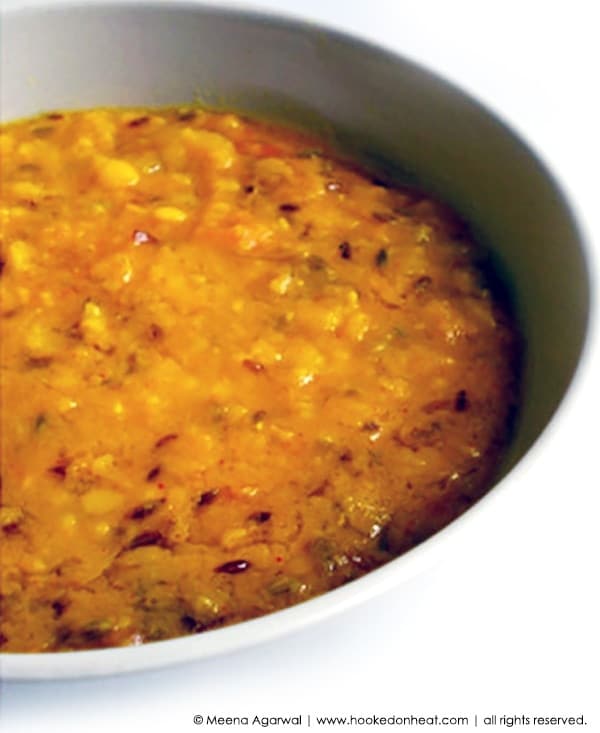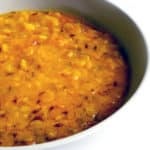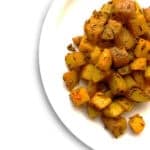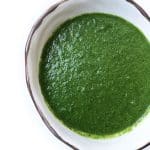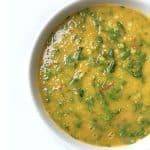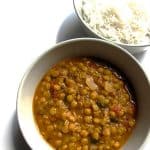When I started out to try and impart what I know of Indian cooking, I had a few things in mind that I knew I just had to talk about – lentils sort of topping this list. I did not want to make this series all about the simplicity in the recipes, but instead, I wanted to discuss the essence of Indian food right from the basics. When one thinks of Indian food, the first few things that come to mind definitely include spice, curries, and Butter Chicken. While these may somewhat play key roles when introducing someone to Indian cuisine, it is hard to leave out the other factors that contribute to the rising popularity of Indian food. Picking up from where I last left off with an introduction to the most basic spices found in almost every Indian home, let me go a step further and bring you into the whole new wonderful world of lentils. Lentils, or Dal, as they are most often known in the Indian menu, are a staple at almost every Indian meal. Ranging from the most basic cooking method of simply boiling it with a dash of salt and adding a robust tempering right before serving, to a more tedious method of slow cooking it with various spices and vegetables, lentils have come a long from where we first knew it to be.
What are lentils?
Lentils are basically legumes and have somewhat of a rich nutty flavour. They are usually sold pre-packaged in bags or boxes, but can also be bought in bulk. When shopping for lentils, it is most important to note how much of an effort you are actually willing to spend in their cooking process. When storing lentils, it is best to keep them in large air-tight containers in a cool spot. Right next to where you store your pasta, is probably also the best spot to display your lentil collection. Lentils come in varied sizes, shapes and colours, each equipped with its own distinct flavour and commendable cooking times. Many of them cooked be cooked in similar ways, but don’t let the difference in tastes of each of them surprise you. That’s what’s so special about including Dals in your meal plans. Not much of an effort where the cooking is concerned, and yet you can have variety in your meals simply by alternating the kinds of lentils you use.
Some of the most common lentils in Indian cooking are:
Masoor (red lentils): The red split Masoor lentils are most commonly used in many homes. They take the shortest time to cook and require no pre-soaking whatsoever. This type of lentils is usually found in everyday meals and make a quick go-to dish when you’re running short of time. Toor/Arhar (yellow lentils): The Toor Dal, is dull yellow in colour and is most often the base for many South Indian specialities like Sambhar. They need to soak for a few hours before cooking, and take longer to boil down to a soft edible center. A quick way to overcome the long cooking process would be to use a pressure cooker. On the contrary, they are perfect for a slow cooker if you’re in need to let a meal do its own thing while you go about your own. Chana (split-pea lentils): The Chana Dal, or split-pea lentils have a deep yellow colour and look like the halves of a chickpea, only in a smaller size. They take the longest to cook and are extremely compatible with both, the pressure cooker as well as a slow cooker. They often take center stage in special dishes, and are a favourite to serve at dinner parties. Moong (green lentils): Being green in colour and taking the shape of a tiny bean is probably what sets this Dal apart from its various counterparts. The Moong Dal is rarely used in preparing everyday meals, but gets its fame as the star of a widely loved dessert call Moong Dal Halwa.
What does an everyday Indian meal look like?
An everyday Indian meal usually comprises of some rice, a few Rotis, a Dal and a vegetable, accompanied with some yogurt, pickle and a light salad. When you’re in no mood to go the whole mile, Dals are best enjoyed with steamed rice and a dash of spicy Indian pickle. In many Indian households, a different Dal is cooked each day, accompanied by a complimenting vegetable. Dals are also used in many non-vegetarian preparations, the most popular known being the Dhansak. A gift from the Parsis, Dhansak is a slow-cooked stew of meat, vegetables and lentils, all simmering in rich, robust spicy flavours. With its chockfull of proteins, lentils are a great addition to a vegetarian diet. Add a handful to your stews and soups for that extra burst of nutrition. Lentils can easily take on varied flavours and add richness to your daily meals. So go ahead, and give it a try.
Some other additions and substitutions to try with this recipe:
This post was originally published in May 2007 and has been recently updated. If you liked this Tadka Dal recipe, I’m sure you will love my Dal Makhani, Simple Everyday Instant Pot Dal and my Palak Dal as well. Made this recipe? Rate it by clicking the number of stars on the recipe card. Want to share your version with me? Tag me on Instagram @hookedonheat
MORE POSTS ON INDIAN COOKING 101
Kitchen Essentials Part 1: Know your Spice Part 2: A Lesson in Lentils Part 3: Pickles and Chutneys Part 4: Indian Street Food Part 5: Cooking Curry for Beginners Part 6: Quick Cooking Tips for Indian Food BONUS 1: How NOT to Cook Indian Food BONUS 2: How to Cook Indian Meals in 20 Minutes
